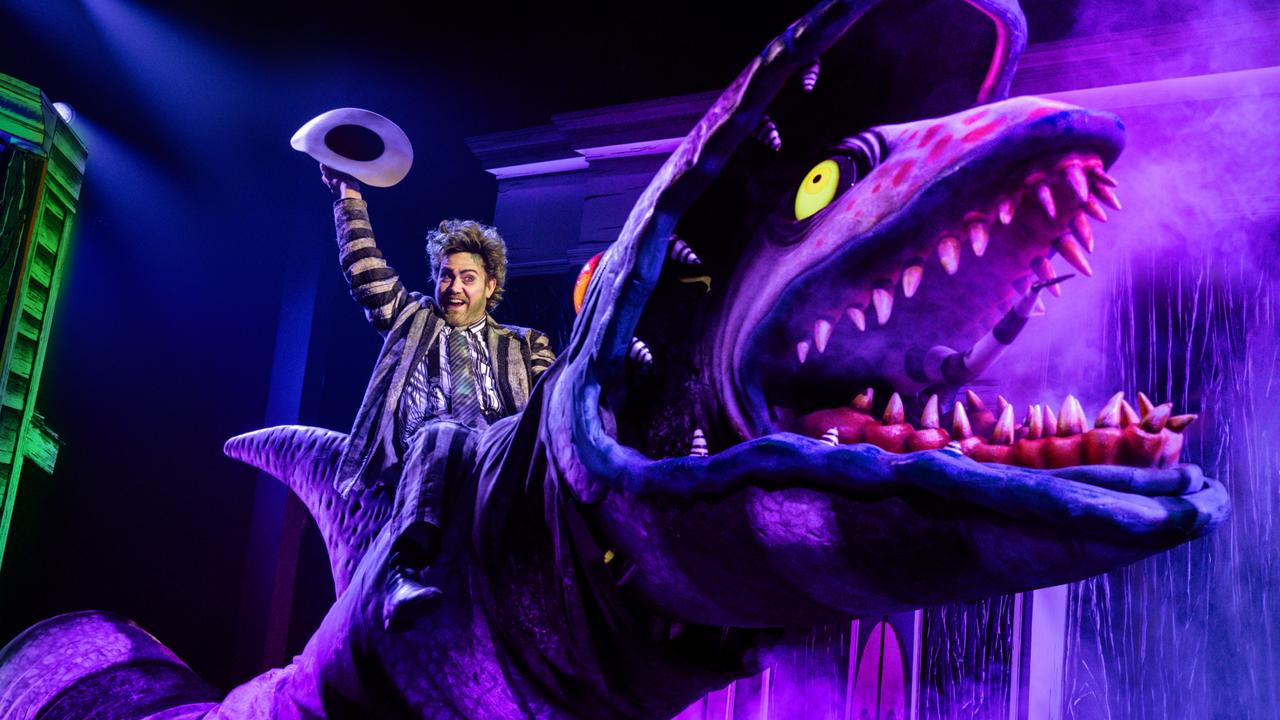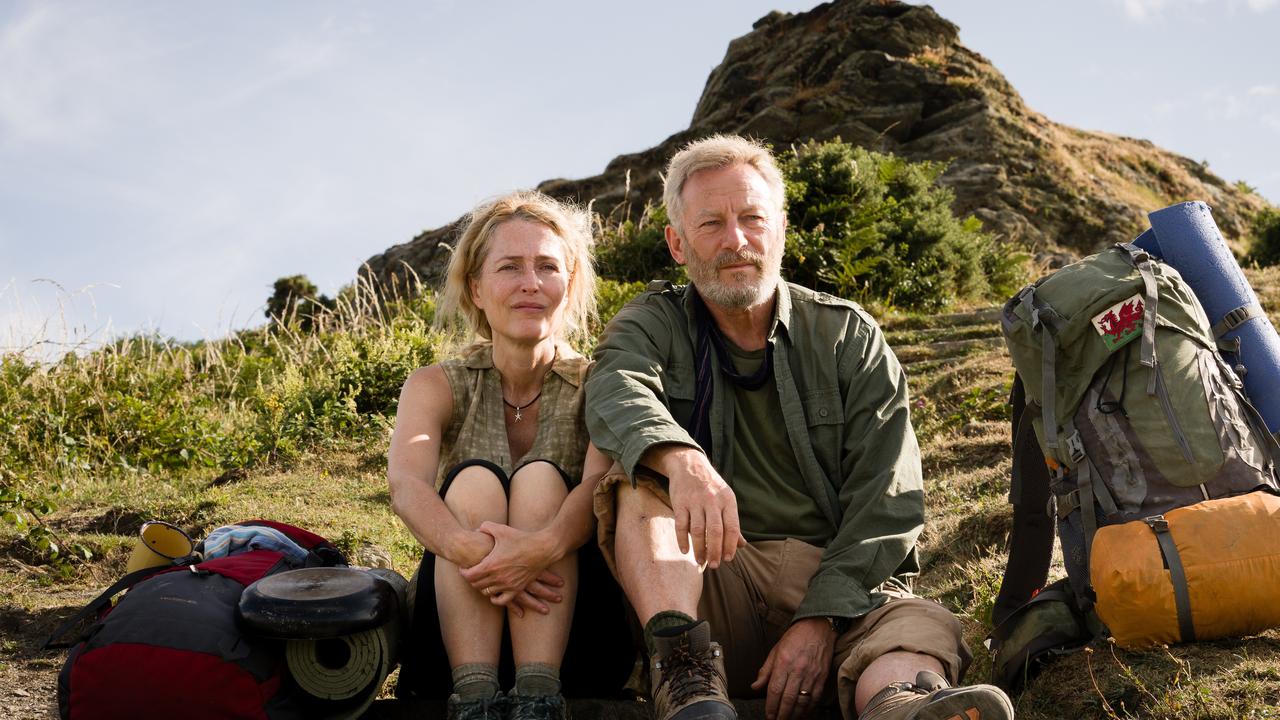Satisfaction
Fifteen years ago the introduction of pay TV brought competition into the market that works for the viewer to this day

Fifteen years ago the introduction of pay TV brought competition into the market that works for the viewer to this day
A FULL-PAGE newspaper birth notice appeared on October 23, 1995, triumphantly declaring a "fantastic new arrival". It was Foxtel, "weighing in with 20 channels". Both parents, News Corporation (owner of News Limited, publisher of The Australian) and Telstra, were said to be delighted, but apart from this announcement the network launched with no drum rolls or red carpet parade of starlets and socialites.
There was a small party for staff and a covers band, One Hit Wonders (not an omen, it was later claimed), performed when the switch was flicked at 7pm. Each of Foxtel's channels simply lit up and got on with it, watched by a handful of cable customers.
It had been a tortuous journey, almost as convoluted as the introduction of TV to Australia in 1956, when many believed nothing short of a nuclear armageddon would deliver us from its evil powers.
By the night of October 23 the organisation had moved into the shell of the huge Wharf 8 at Sydney's Darling Harbour, but for months headquarters for the new operation was two cramped, rented offices above an Advance Bank at the edge of The Rocks precinct. The kitchen doubled as the network's tape library, station IDs and promos were edited on video equipment crammed into hallways and the small staff worked their way around piles of boxes full of tapes that arrived daily from overseas.
The small group of people working for Foxtel were as bemused as their customers as to whether the benefits of pay TV would add anything to their lives. Did we really need more TV, especially if we had to pay for it?
Many still don't have it, for different reasons, but the view there's nothing new on pay TV -- if you don't like sport or news, that is -- is simply no longer true. Fifteen years on it's a vast mix of first-run movies, innovative lifestyle, entertainment, science, true crime, children's, music, documentary and weather channels, all available at a touch of the moulded black remote. The one with those coloured buttons many of us are still working out how to operate, so quickly does Foxtel confront us with new technology.
"It's a mid-celebration, but time has flown," says Brian Walsh, Foxtel's executive director of television, obviously excited at having survived. Walsh started with Foxtel as a consultant early in 1995, having been recruited by the media powerhouse Sam Chisholm, with whom he'd worked in Britain.
He joined Foxtel after a vigorous career in the entertainment industry as film producer, publicity director in commercial radio and TV (he launched Neighbours), sports marketer (two Olympic Games) and event manager. Walsh also spent four years as a consultant to British Sky Broadcasting, where he was involved in the launch of the Premier League soccer and the positioning of Sky One as BSkyB's flagship channel.
Walsh recalls his initial lunch at fashionable Sydney restaurant Catalina, in Rose Bay, with Chisholm representing News Corp, which had decided to throw its hat into the subscription-TV ring. The occasion largely concerned the naming of the new operation. The working moniker was Newstel, representing the names of the two owners, News Corp and Telstra. But at the lunch, given that 20th Century Fox, with its extensive media programs, was becoming a key player in News Corp's TV arsenal worldwide, it was decided to go with the title Foxtel.
As Walsh recalls, it took a long time to get Foxtel off the ground and, unlike the boss, many of us have forgotten the crises and controversies surrounding pay TV's beginnings in Australia. By 1995 there had been 13 years of public inquiries and political delays associated with what was quaintly called the information superhighway that would carry TV.
Just as with the beginning of TV in this country, timing was a big issue: everyone else in the world had it but it seemed pay TV would never arrive here.
As Mark Day said in this newspaper several months before any channels went to air, the saga of pay TV had been a seemingly never-ending story of government bungles, late-night deals over licences, corporate jockeying for position, claims, counter-claims, and promises, promises, promises. "To fiddle with Bruce Springsteen's lyrics: Fifty-seven business and technology stories and nothing to watch," Day wrote.
At the start, as the $4 billion worth of fibre-optic cable started rolling out in streets across the country, we were promised 20-odd channels of programming excellence, greater improved picture quality, better sound, and no ads. All for $11.50 a week.
We didn't know we would get the free-to-air channels as well, but then the whole thing was confusing and inchoate for potential viewers. But many of us loved the feeling of becoming "connected" and possibly "interactive", as was also promised, even if we suspected that the media companies promised a grander version of the information superhighway than they could deliver, given the antiquated telephony services they still offered. (Nothing changes, does it?)
We never really understood who all the competing conglomerates and bitterly competitive networks were, engaged in their complex game of cliff-edge poker. Most of them, such as Australis and Galaxy (remember them?), were quickly pushed over that edge or eventually absorbed by Foxtel, especially in 1998 when pay TV went through a painful bout of rationalisation. "The tension between major players, especially Foxtel and Optus Vision, was extraordinary, with suggestions of the worst underhand behaviour," Walsh says. "It was pretty fiery in those days."
When Foxtel was launched it was a cable service, with Galaxy then providing the satellite coverage. "It was complex and costly," Walsh says. After five years of operation Foxtel passed the 650,000 subscriber mark with about 2.1 million viewers. Most joined for the children's shows: households with kids were twice as likely to subscribe. "We started, for the first time, to think that we had traction," Walsh says.
He remembers the start-up days as highly creative as, given that the service showed no commercials, it had to create fill-in shows to cope with gaps formed by the programs being so short. The network called it "interstitial programming", for between the spaces. Commercial TV shows are made to allow for advertising to fill almost a fifth of each hour.
Walsh and his colleagues "beavered away", making five and 10-minute short-form programs, called "interstitials", to fill the gaps; everything from lifestyle to pop culture to cooking and fashion tips. There were spoofs on soap operas, short dramatic pieces and hosted blocks to kill the time. "We were doing live TV, the way it had been back in the 60s, across each day."
These impromptu, largely improvised segments, including a breakfast show, were often more interesting than the shows that followed, most of them American. "Of course, now we've become a very different type of TV organisation, competing with the free-to-airs on formats and especially dramas," Walsh says.
Change came about six years ago when, despite good subscription rates, Foxtel's programming seemed static. If you were not interested in sports, cooking or news, the network seemed overloaded with repeats, endlessly cycling around, ageing before your eyes. Walsh says the turning point was in trying to eradicate the perception that Foxtel represented only repeat TV. "We went out on to the world market, buying formats, and took a risk on adapting reality shows like Australia's Top Model and Project Runway," he says. With home-grown drama Foxtel's objective was always to be different to the free-to-air channels. "We didn't want to re-create Home and Away or Neighbours but decided to develop drama that was distinctive and edgy."
Around 2004, Foxtel picked up John Edwards and Claudia Karvan's relationship series Love My Way for production (at $500,000 an episode), hopeful the show would attract new subscribers and build their profiles as producers of original drama, as with HBO (Sex and the City, The Sopranos, Six Feet Under) in the US.
But with an audience of just 50,000, Love My Way became known in the industry as the least watched show on TV. Free-to-air network executives were astonished when the series picked up countless awards through 2005, including the first Logie for a pay-TV program.
Although the show didn't have the market reach of a Blue Heelers, it achieved the respect of the creative side of the TV industry, not always noted for its generosity. Perhaps it was the brutally honest approach to the issue of young dysfunctional families, a condition possibly shared by many who work in TV. Shows such as Satisfaction, Dangerous, Tangle, Spirited and comedies The Jesters and 30 Seconds followed. (Last year Foxtel, now with 200 channels, invested $541 million in local production, an increase of 26 per cent.)
"To my mind it is impossible to talk about Foxtel today without also taking account of digital Freeview," says media academic Frances Bonner, lecturer in film and television at the University of Queensland, of the free-to-air networks and their digital outlets now linked under the Freeview marketing umbrella. "I think they interact in a very positive way," Bonner suggests. "I suspect that the threat of Freeview made Foxtel transform its practices and the transformed Foxtel -- more channels, much more new stuff, better bundling -- made the free-to-air channels realise they had to do something more interesting with their digital extras."
Walsh now has 34 per cent of Australians hooked up (more than 1.63 million homes) and his goal is 50 per cent, which he believes is possible within several years. "We thrive on competition and we will increasingly invest in more local production as a point of difference; we'll continue to lift the bar and do things differently and distinctively."
I'm with you all the way, Brian; I just wish I could operate the remote control thing. Oh, and happy birthday.
FIRST Watch was hoping to report on Seven's local version of Japanese cult cooking show Iron Chef, but no preview discs were available when we went to print. Iron Chef Australia started last Tuesday and it will be fascinating to see whether it's an inspired adaptation or a dud like The X Factor. It's certainly an awe-inspiring undertaking.
The original Iron Chef, which premiered in 1992 and lasted until 1999, played in Australia on SBS, gaining an enthusiastic following. It was astonishing, a kind of pro wrestling version of cooking, with martial-arts backflips and the campest of dubbed commentaries. It took an otherwise fairly boring spectator sport, added costumes, colourfully clad heroes, noble challengers and mystery ingredients, and placed an overly theatrical showman at its centre.
The local version is not the first adaptation in what seems a desperate attempt to find any format to put up against Ten's MasterChef. The American version has a tough, genuinely competitive edge, while Iron Chef UK is self-consciously high camp, characterised by extraordinarily hyperactive editing that might induce epilepsy in some viewers. The British show's indefatigable narrator, Olly Smith, is a minor celebrity for his way with words. I like the way oranges are always "grenades of sunshine" and scents are "elevators to aroma heaven".
First Watch shall report in depth shortly on Seven's adaptation, which will probably be a variation on all three. It might surprise us all.
Iron Chef Australia, Tuesday, 7.30pm, Seven.


